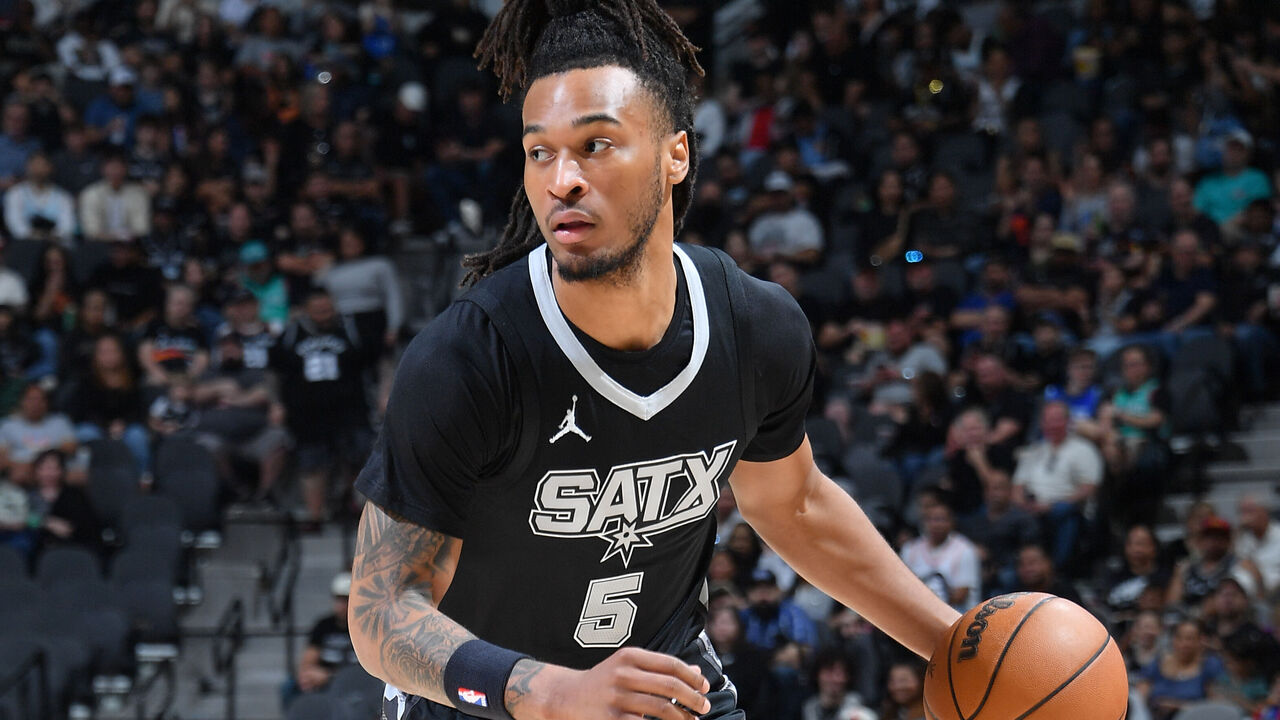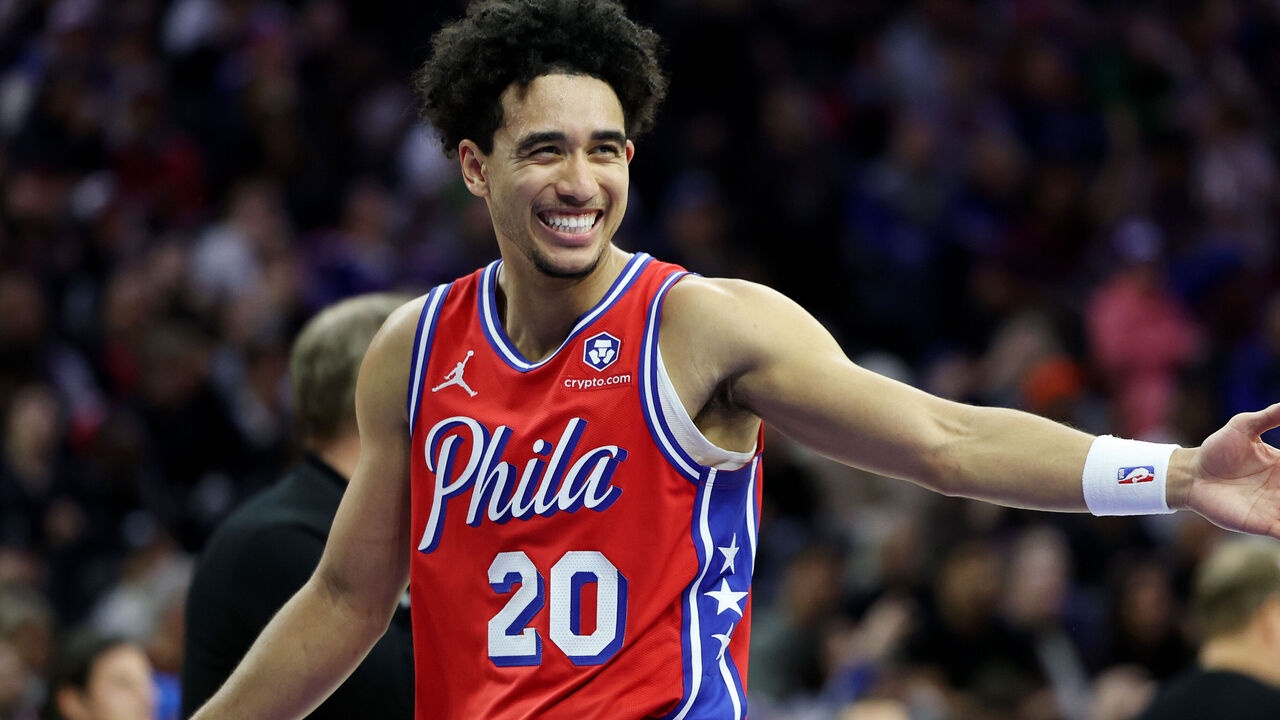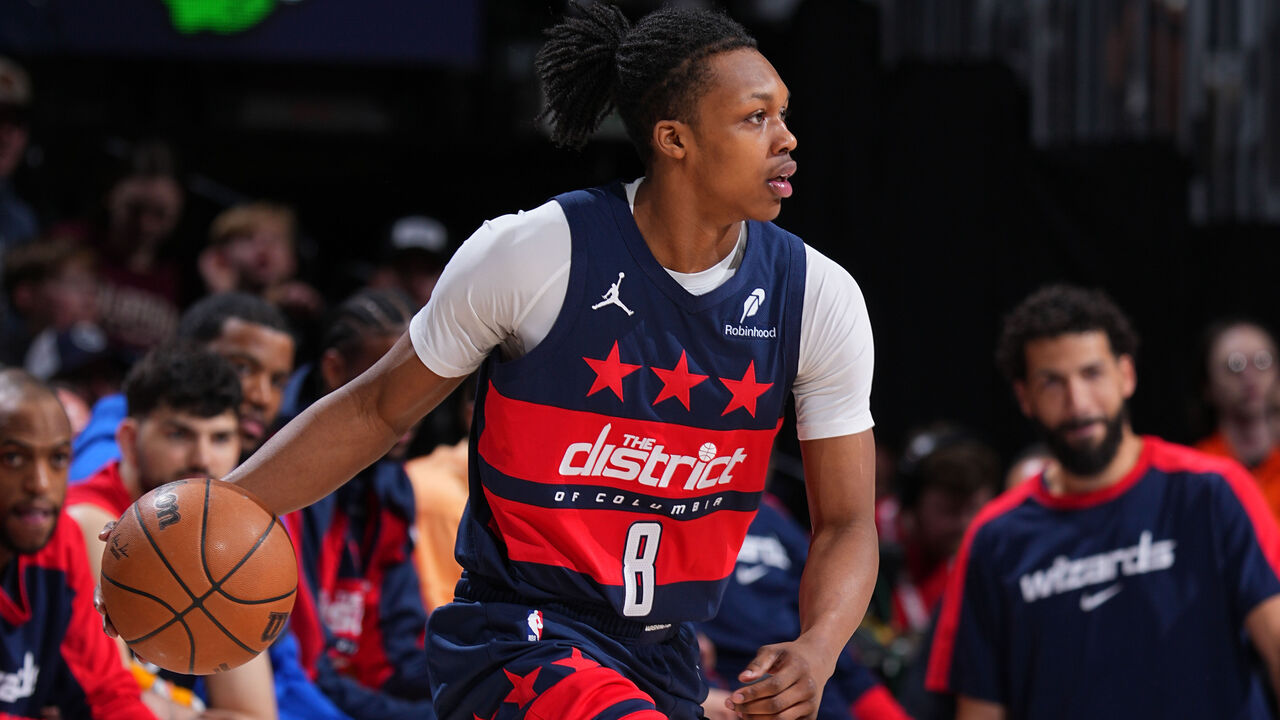Reconsidering the rookies from the denigrated 2024 draft class
You'd be forgiven for not being locked in on the Eastern Conference play-in race right now. Four sub-.500 teams are jockeying for two spots that offer the privilege of being first-round fodder for the Cavaliers and Celtics. You also wouldn't be judged for checking out of the Spurs' season after Victor Wembanyama and De'Aaron Fox were shut down.
But if you haven't tuned in to watch those middling teams, you might've missed some meaningful improvements by some of the more promising rookies in one of the most denigrated draft classes in recent NBA history.
In Atlanta, first overall pick Zaccharie Risacher has done his best to live up to that billing while trying to paper over the huge void left by Jalen Johnson's injury. He's flashed high-level defensive feel while averaging 14.9 points on 61.3% true shooting (50/41/74 splits) since the All-Star break, up from 11.4 on 52.6% true shooting beforehand.
In Chicago, Matas Buzelis has started to figure things out on both ends for a Bulls team that's won nine of its last 12 games. He's doubled his scoring average since the break - to 12.8 per game from 6.4 - and is upping the volume without sacrificing efficiency.
Amid a gloomy post-Jimmy Butler stretch in Miami, rookie 7-footer Kel'el Ware has continued to shine, refining his offensive touch (82% at the rim and 59% from floater range since the break) while showing great fluidity for his size at the defensive end.
Spurs guard Stephon Castle has impressed with his driving and passing verve all season - it's why he's the betting favorite to win Rookie of the Year - and deserves even more recognition for massively scaling up his production recently. He averaged 19.5 points and 4.8 assists per game (24.4 and 6.1 per 36 minutes) on league-average efficiency and nearly 30% usage across 17 games in March.

Those are just a few of the first-year players who have popped during the last leg of the 2024-25 campaign. And while a handful of nice stretches during a notoriously fallow part of the NBA calendar may not be cause for totally rewriting initial projections of this rookie class, it feels like the group has at least earned some reconsideration after a very rough start to the season.
The biggest knock on this class had to do with the lack of top-end talent, and that assessment probably hasn't changed a ton. For all the encouraging progress he's made, Risacher still projects as a lower-end No. 1 pick. There are no surefire stars here as of now, and it's very possible that no Hall of Famers emerge from this group. But history would tell us that there are a couple All-Stars lurking somewhere.
Every draft in the last 70 years has churned out at least three of them (apart from 2022 and '23, which simply haven't had enough time to do so). Even the infamous class of 2000, roundly considered the worst of all time, produced three - though Kenyon Martin, Michael Redd, and Jamal Magloire were all one-time selections.
Castle looks like he has a chance to get to that level, but his 3-point shooting will obviously need to improve for that to happen. The injury-depleted Spurs had a 119.1 offensive rating with him on the floor last month, equivalent to the second-ranked Celtics' season-long mark.
Before a torn meniscus ended his season, 76ers guard Jared McCain looked like he might cruise to ROY honors and keep ascending. He flashed not only a terrific shooting stroke, deft touch from floater range, and slick handles, but an advanced feel for how to relocate and rotate on both ends of the floor.

Wizards second overall pick Alex Sarr has the instincts and physical tools to be a defensive star, especially once he fills out physically. His offense has been choppy for most of this season, but it contains a pretty intriguing skill package for a 7-footer. He can face up and drive, he's getting more comfortable in the short-roll pocket, and he's hit 35% of his threes since the break. It's easy to see him scoring way more efficiently when he's surrounded by better creators in the future.
Risacher and Buzelis haven't yet demonstrated the kind of creation chops that would hint at star-level upside, but Risacher's already a dangerous off-ball weapon - a wicked cutter with a quick, high, minimal-dip catch-and-shoot 3-point release that's very difficult to contest. His jumper has steadily improved as the season's gone along, and he's paired that stroke with a monstrous 38% rim rate, though he still isn't dribbling himself to the basket all that often.
Buzelis has shown a bit more off-the-bounce juice, especially recently; 34.5% of his 2-pointers since the break have been unassisted, up from 25.3% beforehand. On defense, he's shown a knack for disruption, with his 6-foot-10 frame offsetting a neutral wingspan. He's challenging more shots at the rim than any non-center in the class and holding opponents to 62% shooting there, a very respectable number for a rookie forward. Bulls opponents shoot 5.8 percentage points worse inside the restricted area with him on the floor, a 92nd-percentile differential, per Cleaning the Glass.
Ware has a ways to go as a rim-protector, and he has to keep polishing his offensive skills if he wants to be part of a long-term two-big frontcourt, but he's already formed a very strong defensive tandem with Bam Adebayo; the Heat have a 107.8 defensive rating in 444 minutes with both bigs on the floor, better than any team's season-long mark aside from the historically great Thunder.
Even if those guys settle in as high-end complementary pieces, and even if this class proves to be as bereft of consistent All-Stars as 2000 was, the depth of rotation-player talent has a chance to dwarf some of the other most maligned classes in recent history.
Hulking Blazers center Donovan Clingan already profiles as one of the better rim protectors in the league. He's holding opponents to 49.6% shooting at the rim, good for third among players who have contested at least 200 such shots this season, per NBA Advanced Stats. He also ranks in the 96th percentile among all centers in rim deterrence, per Cleaning the Glass. The even more enormous Zach Edey has contributed right away to a strong Grizzlies team, bringing phenomenal touch (including a near-unstoppable jump hook) while inhaling rebounds and moving his feet just well enough to hang on defense - at least when Jaren Jackson Jr. is beside him.
Jaylen Wells, Edey's rookie teammate, may not have the highest ceiling, but he's already an archetypal 3-and-D wing who's been starting for a playoff team all season, guarding every position from one through four while drilling spot-up threes and attacking closeouts with intent. The Suns may not be a playoff team, but wing stopper Ryan Dunn has been one of the rare feel-good stories in Phoenix. Ditto for big man Oso Ighodaro, a smart short-roll playmaker and switchable defender who owns the best net rating on the team.
Wizards wing Kyshawn George is a savvy defensive playmaker whose jump shot should eventually be good enough to make him a quality role player. The Pistons' Ron Holland is another wing whose career arc will hinge on the development of his jumper, but he's already a wrecking ball in transition with some sneaky good passing feel and legit defensive chops. The Lakers' Dalton Knecht is the opposite - a ready-made movement shooter who has to fill out some other aspects of his game. The Raptors' Ja'Kobe Walter looks like a potential jack-of-all-trades who can contribute with pestering on-ball defense, an opportunistic eye for cuts, and secondary ball-handling.
Elsewhere on the big-man front, the Pelicans' Yves Missi could be a quality rim-running rim-protector (though the second part of that equation needs a lot more work), while the Jazz's Kyle Filipowski and Warriors' Quinten Post look capable of sticking around long-term as skilled stretch fives (Post has hit 44% of his catch-and-shoot threes this season).
This group is light on high-upside guards outside of Castle, but I'm intrigued by the Wolves' Rob Dillingham and the Thunder's Ajay Mitchell, who might be the best pure drivers in the class. The Jazz's Isaiah Collier is also a shifty drive-and-kick playmaker who lives in the paint. Rockets third overall pick Reed Sheppard has looked way over his head at the highest level so far, but he came into the season with as much helium as anyone in the class after shooting the lights out in college and tearing up Las Vegas Summer League. (He also tore up his brief G League assignment this season).

Other rookies who have shown promise with select but evident rotation-caliber NBA skills include Jamal Shead, Bub Carrington, Jonathan Mogbo, Devin Carter, and Jaylon Tyson. Perhaps that list will ultimately add Nikola Topic and DaRon Holmes, who had to redshirt their rookie years due to injuries.
Obviously not all of these guys are going to carve out productive NBA careers, but it's encouraging that there are this many who have shown the potential to do so. The bar is low, but this looks like a much more promising class than 2000 and a deeper one than 2013, which featured not only one of the worst lotteries ever but also a completely barren second round. (At least 2000 had Redd going outside the first round; the best second-rounder to come out of 2013 was Mike Muscala). That draft was salvaged entirely by Giannis Antetokounmpo and Rudy Gobert.
Much is still to be written about the 2024 class, but it feels like the way it's ultimately viewed historically will depend on how people weigh the quality of a draft's top performers versus the quantity of solid careers it produces.
My take: They won't sing songs about this cohort, but it will wind up looking more respectable than the disaster class it's been made out to be.
Joe Wolfond covers the NBA for theScore.
HEADLINES
- Flagg youngest in NBA history with 35-point game as Mavs beat Clippers
- East-leading Pistons hold off Heat to snap 2-game skid
- Hornets erase 17-point deficit to end Raptors' 9-game win streak
- Thunder's Hartenstein out at least 10-14 days with calf strain
- Pelicans' Looney returns to Bay Area after winning 3 titles with Warriors